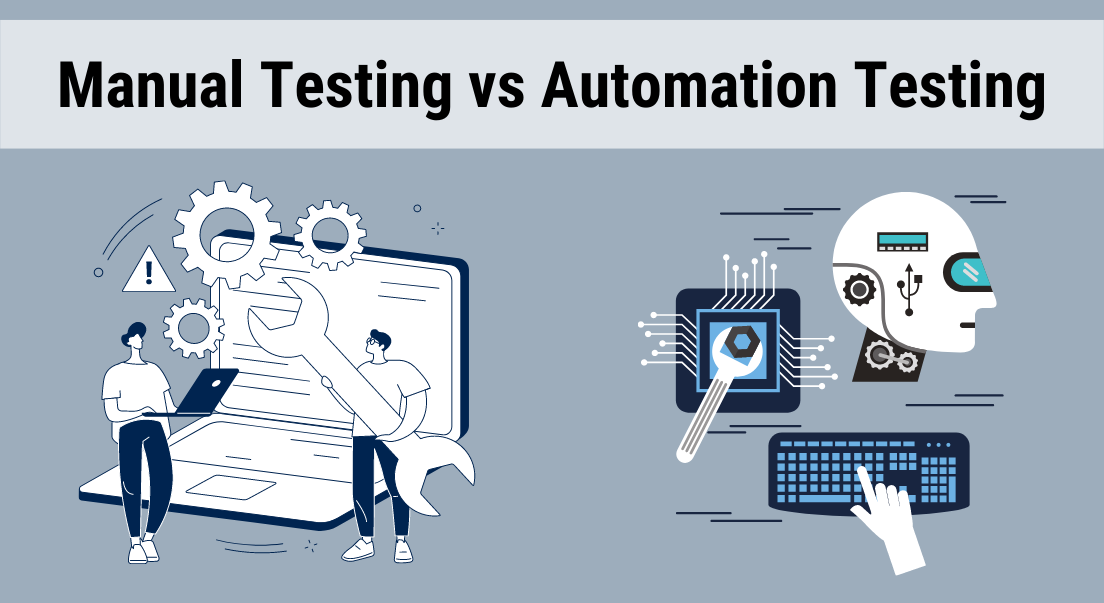Mastering Automation Testing: Devices, Strategies, and Advantages
Mastering Automation Testing: Devices, Strategies, and Advantages
Blog Article
From Manual to Automated Screening: A Comprehensive Overview to Transitioning Efficiently and Successfully
In the world of software program testing, the shift from guidebook to automated procedures has actually become a progressively vital transition for organizations seeking to improve performance and precision in their testing practices. As innovation proceeds to development, the demand for reliable and seamless computerized screening techniques has never ever been more important. The trip from guidebook to automated screening is not without its challenges, yet when come close to strategically and with a clear strategy in mind, the advantages can be substantial - automation testing. In this detailed guide, we will check out crucial actions and factors to consider crucial for an effective transition, from the initial option of tools to the integration of automation into existing workflows. Remain tuned to uncover the understandings that will certainly help lead the way for a smoother and a lot more efficient screening process.
Benefits of Automated Checking
Automated screening provides countless advantages, improving efficiency and accuracy in software application growth procedures. One key benefit is the substantial decrease in screening time. Automated tests can be run simultaneously on numerous gadgets and running systems, drastically speeding up the screening stage compared to hand-operated screening. This boosted performance allows for faster comments on the high quality of the software program, enabling programmers to identify and address problems without delay.
Additionally, automated testing guarantees a higher level of accuracy in detecting problems. Given that automated tests adhere to predefined scripts, human mistake is decreased, causing even more reputable examination results. Uniformity in testing is additionally enhanced, as automated tests implement the same steps precisely each time they are run. This uniformity is crucial in making sure that all performances of the software application are completely checked, reducing the chance of undiscovered pests sliding with to production.
Choosing the Right Tools

First of all, analyze your requirements and purposes. Understand the range of your job, the technologies included, and the ability of your group. This analysis will aid you determine the capabilities and functions you call for in your testing devices.
Secondly, take into consideration the compatibility of the devices with your existing procedures and systems. Seamless integration with your current software application growth lifecycle is necessary to guarantee a smooth shift to automation.
In addition, review the scalability and adaptability of the tools. As your testing needs advance, the tools should be able to adjust and fit modifications efficiently.
Lastly, consider the support and community around the devices. Durable support and an energetic individual neighborhood can offer valuable resources and help when carrying out automated screening. By thoroughly taking into consideration these aspects, you can select the right devices that line up with your requirements and established the phase for an effective change to automated testing.
Composing Efficient Examination Manuscripts

When crafting examination scripts, it is vital to think about the specific needs of the software application being examined and ensure that the manuscripts address all vital performances. Descriptive and clear calling conventions for examination manuscripts and test cases can boost readability and maintainability. Additionally, integrating mistake handling mechanisms within the examination scripts can assist in recognizing and addressing issues immediately.
Moreover, organizing examination manuscripts into modular elements can enhance reusability and scalability, decreasing redundancy and enhancing performance in test manuscript maintenance. Routine reviews and updates to test manuscripts are important to maintain rate with advancing software needs and capabilities. By complying with these concepts, basics testers can produce reliable and durable examination scripts that add significantly to the success of automated testing processes.
Integrating Automation Into Workflows
By seamlessly integrating automated screening devices like Selenium or Appium into the software program development lifecycle, groups can accomplish faster feedback on code modifications, leading to quicker insect detection and resolution. This combination permits for continual screening throughout the development procedure, making certain that any type of concerns are recognized early on, resulting in greater software quality. Correct combination of automation tools calls for collaboration between development, screening, and procedures teams to develop a unified operations that maximizes performance and efficiency in delivering high-grade software program items.
Making Sure a Smooth Transition
Effectively transitioning to automated testing involves meticulous planning and mindful execution to reduce disruptions and optimize efficiency in the software growth procedure - automation testing. To make certain a smooth transition, it is vital to begin by performing a detailed evaluation of the present screening processes and recognizing areas where automation can bring one of the most considerable benefits. Involving with all stakeholders beforehand at the same time, including designers, testers, and job supervisors, is essential for amassing support and buy-in for the automation initiative
Interaction is key during this transition phase. Clear communication of the objectives, benefits, and assumptions of automated screening helps to handle any resistance or problems that might develop. In addition, giving sufficient training and sources for staff member to upskill in automation devices and methods is crucial for making sure a successful change.

Conclusion
Finally, transitioning from handbook to automated testing uses numerous benefits, including raised performance and integrity. By selecting the appropriate tools, creating effective examination manuscripts, and integrating automation effortlessly right into workflows, companies can guarantee a smooth and successful change. It is vital to welcome automation as an important asset in software program testing processes to enhance overall quality and efficiency.
In the realm of software program testing, the change from handbook to automated processes has come to be a significantly crucial transition for organizations seeking to improve effectiveness and precision in their testing methods. Automated tests can be run concurrently on multiple gadgets and running systems, substantially speeding up the testing stage contrasted to hands-on screening. Consistency in testing is additionally improved, as automated examinations perform the very same actions specifically each time they are run.To make sure the successful implementation of chosen my review here screening devices, the development of reliable test scripts plays an important duty in validating the visit this page performance and performance of automated procedures - automation testing. By following these concepts, testers can create durable and efficient examination scripts that contribute significantly to the success of automated screening procedures
Report this page